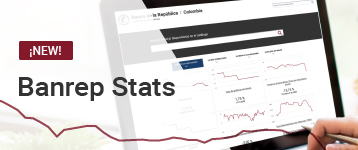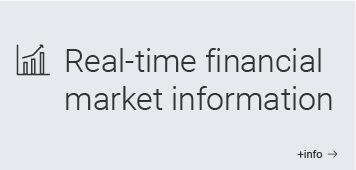PRESS RELEASE: INFLATION REPORT
| Presentation: Inflation Report (Only Available in Spanish) | |
| Inflation Report - March 2018 (Only Available in Spanish) |
In the first quarter of 2018, inflation and core inflation fell more than projected and accelerated their convergence to the 3.0% target. In March 2018, the annual variation of the CPI and the average of core inflation indicators stood at 3.14% and 3.64%, respectively. These figures were close to 1 pp lower than the records of last December.
The favorable performance of inflation led to the reduction of expectations about future inflation. For example, the December 2018 and December 2019 survey to analysts suggests that inflation will stand at 3.37% and 3.16%, respectively. On the other hand, inflation expectations resulting from government bonds to 2, 3, and 5 years stands between 3.0% and 3.3%.
Several factors explain the favorable performance of consumer prices. One of them would be the wide food supply; another one, the reduction in the impact of the VAT; and another, perhaps, the reduction of the exchange rate and its impact on import prices.
Production continued to recover, but at a lower rate than the growth potential of the economy, therefore the spare capacity would have widened at the beginning of the year. This would also contribute to the convergence of inflation to the target. The dynamics of domestic demand would have improved, but would still be weak, and consumption and investment would register low growth rates.
The figures for the external balance show that the economy would be completing its adjustment process. In 2017, the current account deficit fell again, standing at 3.3% of GDP. This is explained by the recovery of revenue, and not by the fall of outflows as happened a year ago. Foreign trade data of the first two months of 2018 suggest that this behavior would have continued. In fact, exports in US dollars, both of commodities as well as services and non-traditional products, exhibited significant increases, favored by the recovery in the price of oil and the improving dynamics of external demand. In the same period, the value of imports exhibited a low rate of increase, partly due to the weakness of domestic demand.
Recent data from the external sector indicate some of the trends observed at the beginning of the year have accentuated, bringing significant effects on growth, inflation, and inflation expectations. External interest rates continued to increase slowly; the price of oil has recovered and remains above USD 70 per barrel; and the peso appreciated vis-à-vis the US dollar. This would be consistent with an improvement in the terms of trade and in national income, as well as with a low dynamics in the prices of tradable goods and services.
The unemployment rate exhibited a slow but steady increase. Estimates indicate that this labor market would be slacking, with low cost pressures on prices. Some wage increases such as those in heavy construction (3.6%) and home building (3.9%), decelerated significantly in March, registering increases that are more compatible with the inflation target. Other salaries, such as those of industry and retail, are still adjusting at rates far higher than 3.0%.
The commercial portfolio in real terms recorded rates that can be considered historically low. Something similar happened with household credit (consumer and mortgage). As a result of these trends, different measurements of the credit cycle suggest that the dynamics of the total portfolio is below its long-term trend. This has been observed since the beginning of 2016. The reductions in the policy interest rate continue to be transmitted to the interest rates on loans, mainly to commercial and mortgage loans, and to a lesser extent to consumer loans.
The technical staff maintained its growth projection for 2018 at 2.7%, assuming a more dynamic external demand than in previous years and higher terms of trade. Investment in 2018 would be driven by a greater implementation of civil works (particularly, 4G projects) and higher levels of foreign investment in the mining sector. The reductions in the policy interest rate carried out so far and a lower inflation should promote a better dynamics of credit, investment, and household spending. In any case, GDP growth will be lower than its long-term potential (3.3%); given this, the spare capacity of the economy will continue to widen. The dynamics of external income is expected to exceed that of expenses in 2018, and the current account deficit is expected to reduce to 3.1% of GDP.
Several factors would also contribute to the convergence of inflation to the 3.0% target. Firstly, the more sticky prices, as well as wages other than the minimum wage, are expected to become indexed to a lower inflation than the one observed in previous years. Additionally, a more negative output gap and a more slacking labor market would also contribute to reduce it. Naturally, there are risks such as an unexpected upturn in food prices, or a stronger-than-expected depreciation of domestic currency, with the subsequent effects on the prices of imported goods. However, uncertainty about these scenarios is high.
In summary, the lower inflation observed versus its forecast and the reduction in inflation expectations could lead to a faster convergence of inflation to the target. Economic growth remains weak, but is recovering, and the output gap Indicators suggest that the spare capacity would expand in 2018. In this environment, assessing the situation of the economy and the risk balance, the Board deemed appropriate to reduce the benchmark interest rate by 25 basis points in April 2018, placing it at 4.25%.
The Board will continue to carefully monitor the behavior of inflation and the forecasts for economic activity and inflation in the country, as well as the international context. Finally, the Board reiterates that the monetary policy will depend on the availability of new information.















































